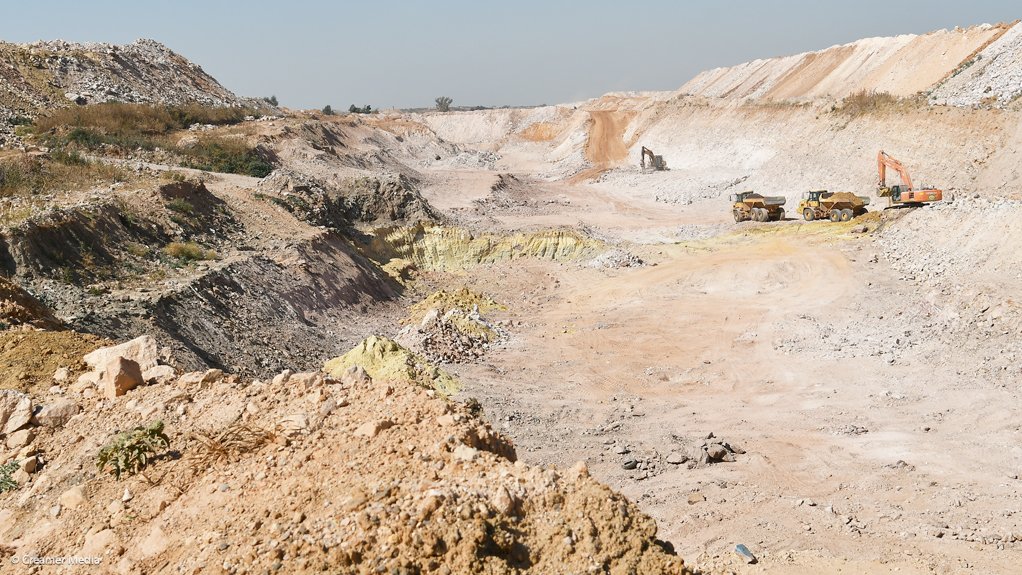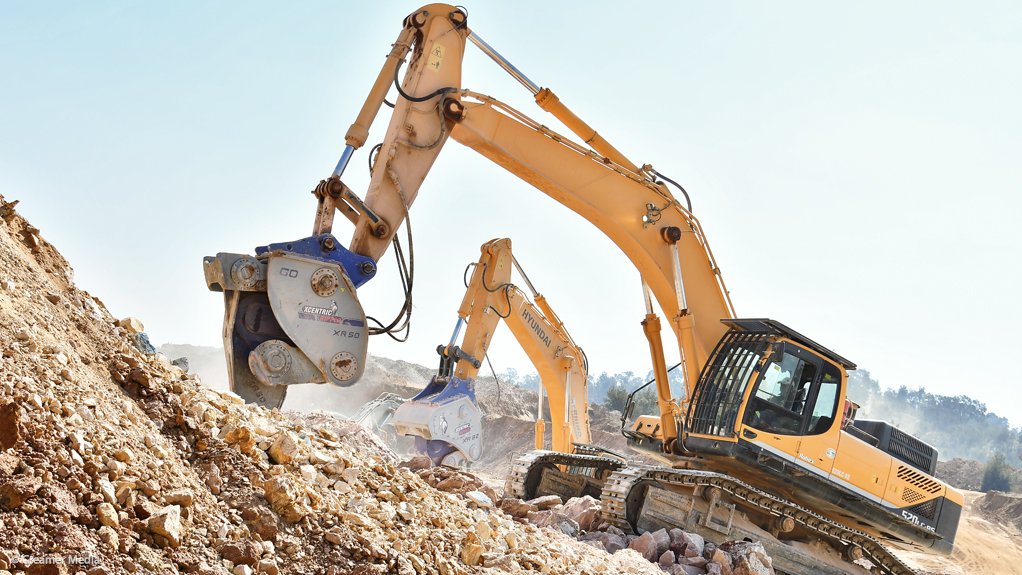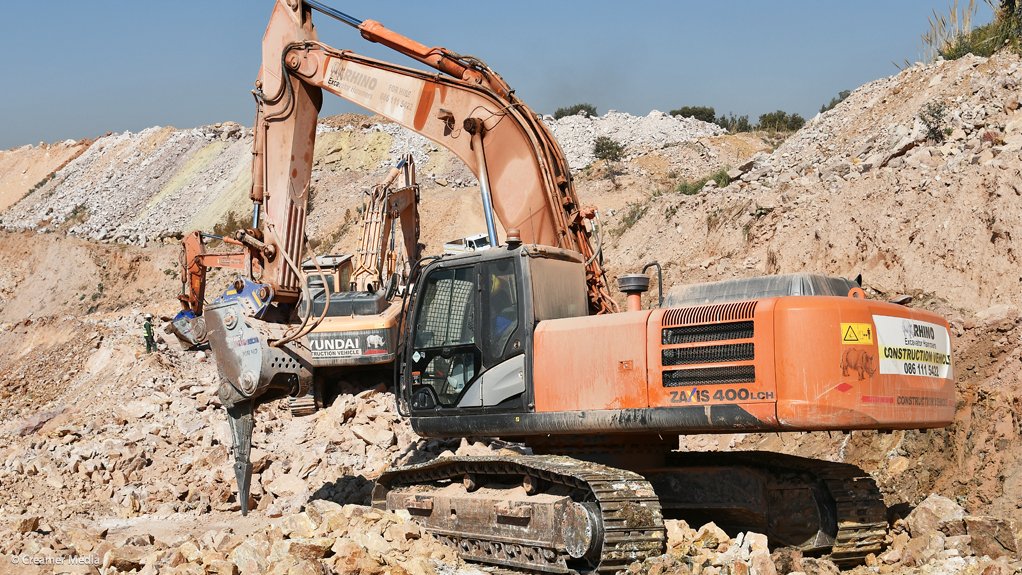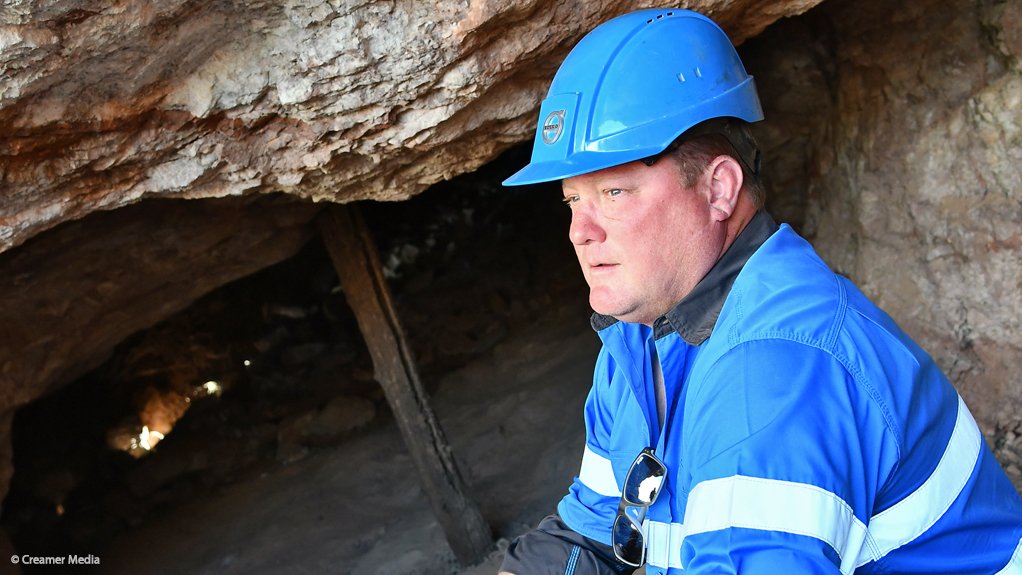West Wits breathes life into old gold mine





West Wits' opencast mine near Roodepoort
Photo by Dylan Slater
Xcentric Ripper
Photo by Dylan Slater
West Wits operational manager Eddie Milne
ASX-listed exploration and development company West Wits Mining is reinvigorating the goldfield known as the Witwatersrand basin, near Roodepoort, which has a revised Joint Ore Reserves Committee-compliant mineral resource estimate of 3.67-million ounces of gold.
The company has restarted openpit mining on the deposit, with two mines in operation until May 2019 and December 2019, respectively, going no deeper than 400 m below surface.
West Wits plans on commissioning five more openpits and submitted mining right applications for these in April.
The Department of Mineral Resources is expected to grant West Wits the mining rights in the first half of 2019.
Additionally, the company has two mining permits that are expected to be granted in the second half this year, which have the potential to produce between 25 000 oz and 40 000 oz of gold, grading between 5 g/t and 7 g/t.
West Wits is currently producing about 900 oz/m from one of its openpits.
The openpits are the initial operations that will be used to fund underground mining through an existing mine shaft in the Witwatersrand basin. The shaft goes down 1 200 m, but West Wits will mine until it reaches the groundwater level, and will not be pumping water out.
West Wits saw opportunity in this area as much gold was left behind by prior big mining operations, gold which can be mined through shallow quick-cycle opencast mining.
The company sends the ore to a Sibanye-Stillwater processing plant 40 km away to be processed.
West Wits chairperson Michael Quinert highlighted during a media tour of the company’s openpit mines that the company spends much time and effort to rehabilitate the areas it has finished mining to not only make the property useful again for developers, but to prohibit illegal miners from re-entering old mine access points, which are prevalent throughout the Witwatersrand basin.
Additionally, rehabilitating the ground reduces dumping and illegal occupation of land in the area.
The company has already closed up five entry points in an 800 m stretch of land.
West Wits has invested more than R100-million into the entire project, with 75 jobs having been created, with a further minimum 700 jobs planned over the duration of the project.
Quinert pointed out that West Wits’ black economic empowerment partner Lilitha Resources holds 33.3% ownership of the operating company, and re-invests 90% of its earnings, therefore money and jobs are not going into foreign hands.
Additionally, West Wits spends around R50 000 a month on community development through creating agricultural gardens, establishing and supporting soup kitchens, shaping and levelling football fields for community use and contributing to educational development programmes.
Quinert stressed that West Wits does not use blasting in any of its mining operations in the basin, but rather uses Xcentric rippers, which are more environment- and social-friendly, and works similar to a jackhammer to break rock, while having reduced carbon emissions (compared to a hydraulic hammer) and a low noise level.
The underground mine that West Wits plans on reopening is expected to produce 100 000 oz/y of gold, with a mine life in excess of 25 years.
PROJECT HISTORY
The Witwatersrand basin comprises two historic mining centres known as the Durban Roodepoort Deep and the Rand Leases on the northern edge of the Witwatersrand basin in the Central Rand Goldfield immediately southwest of the city of Johannesburg.
Mining has been taking place within these areas since discovery of the goldfields in 1886. During that time, up to seven different gold-bearing conglomerate horizons have been mined from surface down to a depth of 3 100 m and total production for the combined Durban Roodepoort Deep and Rand Leases area was over 30-million ounces of gold at a grade in excess of 5 g/t.
The gold mineralisation of the Witwatersrand basin deposits form part of the Central Rand Goldfield hosted by the Witwatersrand super-group sediments. The Central Rand Goldfield is situated immediately to the south of Johannesburg and has been host to one of the most extensive gold reserves in the world.
The reefs have been mined continuously on strike for about 32 km in an east/west direction, bounded by, then miner and now tailings processor, DRDGold in the west, and down-dip, to the south, for about 6 km from its outcrop position, to vertical depths of about 3 km.
Between 1897 and 1984, about 9 000 t, about 290-million ounces, of gold were extracted from the Central Rand Goldfield. The gold orebodies occur in stacked, channelised, quartz pebble conglomerate horizons referred to as “reefs”.
The major orebodies mined in the Central Rand Goldfield are the Main Reef, Main Reef Leader, South Reef, Bird Reef and Kimberley Reef.
Comments
Announcements
What's On
Subscribe to improve your user experience...
Option 1 (equivalent of R125 a month):
Receive a weekly copy of Creamer Media's Engineering News & Mining Weekly magazine
(print copy for those in South Africa and e-magazine for those outside of South Africa)
Receive daily email newsletters
Access to full search results
Access archive of magazine back copies
Access to Projects in Progress
Access to ONE Research Report of your choice in PDF format
Option 2 (equivalent of R375 a month):
All benefits from Option 1
PLUS
Access to Creamer Media's Research Channel Africa for ALL Research Reports, in PDF format, on various industrial and mining sectors
including Electricity; Water; Energy Transition; Hydrogen; Roads, Rail and Ports; Coal; Gold; Platinum; Battery Metals; etc.
Already a subscriber?
Forgotten your password?
Receive weekly copy of Creamer Media's Engineering News & Mining Weekly magazine (print copy for those in South Africa and e-magazine for those outside of South Africa)
➕
Recieve daily email newsletters
➕
Access to full search results
➕
Access archive of magazine back copies
➕
Access to Projects in Progress
➕
Access to ONE Research Report of your choice in PDF format
RESEARCH CHANNEL AFRICA
R4500 (equivalent of R375 a month)
SUBSCRIBEAll benefits from Option 1
➕
Access to Creamer Media's Research Channel Africa for ALL Research Reports on various industrial and mining sectors, in PDF format, including on:
Electricity
➕
Water
➕
Energy Transition
➕
Hydrogen
➕
Roads, Rail and Ports
➕
Coal
➕
Gold
➕
Platinum
➕
Battery Metals
➕
etc.
Receive all benefits from Option 1 or Option 2 delivered to numerous people at your company
➕
Multiple User names and Passwords for simultaneous log-ins
➕
Intranet integration access to all in your organisation






















